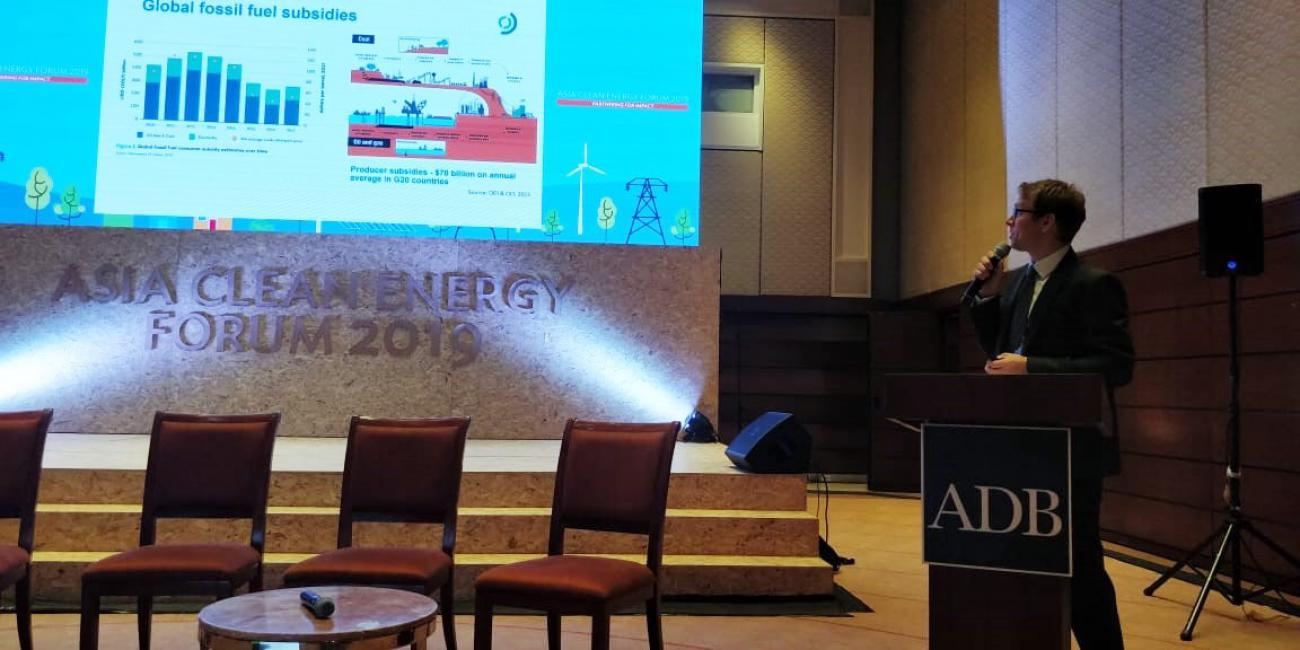Subsidy Reform Could Fund the Energy Transition: Talking subsidy swaps at ACEF 2019 in Manila

A series of tipping points indicate that fossil fuels’ dominance of the energy sector is waning. Since 2008, investments in renewable generation have exceeded those in fossil fuel-powered generation. The annual installed capacity of renewables has surpassed fossil fuel capacity additions every year since 2014, and the overall share of renewable energy in the global electricity mix is above 20 per cent now and rising.
This shift represents a global “swap” from fossil fuel subsidies to clean energy. At the Asia Clean Energy Forum (ACEF) in Manila (Philippines), Richard Bridle and Balasubramanian Viswanathan from the International Institute for Sustainable Development (IISD) launched a report exploring how the expansion of such a swap could further accelerate the transition.
The report authors highlight that the “subsidy swap” concept could not only make the clean energy revolution possible, but it frees up taxpayers’ money for other priorities. Fossil fuel subsidies are costly, tend to be captured mainly by the rich and create barriers to the adoption of cleaner technologies. The Global Subsidies Initiative (GSI) of the IISD estimates that, globally, we still spend more than USD 470 billion per year on subsidies to producers and consumers of fossil fuels. This is far more than is spent on subsidies to renewables, which are estimated at approximately USD 100 billion.
However, subsidy reform is particularly challenging, because even though most of the subsidies are captured by the rich, many recipients depend on fossil fuel subsidies for their basic energy needs. For example, in India, the government has reduced spending on kerosene subsidies, raising prices for consumers. Price increases adversely affect poor households with unreliable electricity access. A subsidy swap overcomes this problem by reallocating some of the savings of subsidy reform to fund a shift to clean energy solutions to bridge the gap. Solar electrification options like lanterns, home systems and microgrids are cheaper than kerosene wick lamps over their lifetime. They also offer better lighting and other services, such as mobile phone charging. A subsidy that reduces the initial investment costs of these options could lead to widespread uptake.
Also speaking at ACEF, Shalu Agrwal, program lead for the Council on Energy, Environment and Water (CEEW), explained that swap policies can be popular: a survey of 9,000 rural households found that 84 per cent were in favour of foregoing their kerosene subsidies in exchange for access to distributed renewable energy.
Revolutionizing the energy system requires a fundamental shift away from subsidies to coal, oil and gas, which today meet the bulk of global energy demand. The report includes an analysis of several examples of swaps for water pumping, large-scale grid-connected generation and energy efficiency from India, Morocco, Zambia and Indonesia. As renewable energy becomes cheaper, there are many more opportunities to swap away from fossil fuels, saving public money on subsidy costs and freeing up money for other priorities, all while reducing air pollution and carbon emissions. The subsidy swap is a growing trend with the potential to be transformative in the years to come.
